Home> Company News> Enhancing Efficiency with Ball Bearing Take Up Units: A Comprehensive Guide
- AddressTianqiao, Beiyuan District, Jinan,Shandong
- Worktime9:00-18:00(Beijing time)
- Phone(Working Time)0531-8299 9953
Ball bearing take up units are essential components in mechanical systems, playing a crucial role in enhancing efficiency and load management. In this comprehensive guide, we will delve into the world of ball bearing take up units, providing a detailed understanding of their design, functionality, applications, advantages, challenges, selection criteria, maintenance practices, and future trends. Let's embark on this journey to explore how these remarkable components contribute to the smooth operation of various mechanical systems.
Defining Ball Bearing Take Up Units
To kick things off, it's essential to establish a clear definition of ball bearing take up units. These units are specialized components designed to accommodate and support conveyor belts, drive shafts, and other mechanical systems. They provide the necessary flexibility to adjust belt tension, compensate for thermal expansion, and handle misalignment, all while ensuring efficient load distribution.
The Significance of Ball Bearing Take Up Units
Understanding the significance of these units in mechanical systems is crucial. They are the unsung heroes that help maintain the integrity and performance of conveyor systems, agricultural machinery, and various industrial applications. Without ball bearing take up units, many of these systems would face issues related to misalignment, tension, and load management, resulting in inefficiency and potential breakdowns.

Structure and Functionality
we will explore the intricate design and functionality of ball bearing take up units. Understanding their construction and how they manage radial and axial loads with precision is fundamental to appreciating their role in enhancing efficiency within mechanical systems.
Design and Construction of Ball Bearing Take Up Units
Ball bearing take up units are engineered with meticulous attention to detail. Their design is centered around the idea of accommodating conveyor belts, drive shafts, and other mechanical elements with flexibility and precision. These units consist of several key components:
|
Housing |
The housing of a ball bearing take up unit serves as the outer shell that encases the inner components. It is typically made from materials like cast iron, stainless steel, or thermoplastic, depending on the application's requirements. The housing provides structural support and protection for the internal components. |
|
Bearing
|
At the heart of the unit is the ball bearing itself. These bearings are characterized by their ability to handle both radial and axial loads simultaneously. They are designed with four contact points that distribute the load evenly, reducing stress on the bearing and ensuring smooth operation. |
|
Take Up Frame |
The take-up frame is an adjustable component that allows for the alignment and tension adjustment of conveyor belts. It plays a crucial role in maintaining proper belt tension and compensating for thermal expansion or contraction. This adjustability is essential for the smooth operation of conveyor systems. |
Precision Handling of Radial and Axial Loads
One of the remarkable features of ball bearing take up units is their ability to handle both radial and axial loads with precision. Let's break down how they accomplish this:
Radial Loads
Ball bearings are well-suited for radial loads, which are forces acting perpendicular to the bearing's axis. The four-point contact design ensures that radial loads are evenly distributed across the bearing's contact points. This results in reduced friction, lower wear and tear, and improved efficiency.
Axial Loads
In addition to radial loads, ball bearing take up units excel at managing axial loads, which are forces acting parallel to the bearing's axis. The four-point contact design also proves advantageous in this regard. It allows for axial loads to be evenly distributed, preventing excessive stress on any single point and ensuring reliable performance.
Critical Components for Functionality
To achieve precision in handling both radial and axial loads, several critical components contribute to the functionality of ball bearing take up units:
Ball Cage
The ball cage holds the individual balls in place, preventing them from coming into direct contact with each other. This separation reduces friction, minimizes heat generation, and enhances overall bearing efficiency.
Lubrication
Proper lubrication is essential for reducing friction and wear within the bearing. Lubrication channels and reservoirs are designed into the unit to ensure that the bearing remains adequately lubricated, even in demanding applications.
Seals and Shields
Seals and shields protect the bearing from contaminants such as dust and moisture. They help maintain the integrity of the internal components, prolonging the unit's lifespan and reliability.
Applications and Industries
we will delve into the wide-ranging applications and industries that benefit from the use of ball bearing take up units. These versatile components find their utility in a plethora of mechanical systems, each showcasing their ability to enhance efficiency and load management.
Diverse Industries Depend on Ball Bearing Take Up Units
Ball bearing take up units have established their presence across a multitude of industries, serving as indispensable components for ensuring smooth operations. Here, we'll take a closer look at some of the sectors where these units play a pivotal role:
Conveyor Systems
The material handling industry heavily relies on conveyor systems to transport goods efficiently. Ball bearing take up units are integral in conveyor belt mechanisms, allowing for the tensioning and alignment of belts. This is crucial for maintaining product flow, reducing downtime, and optimizing overall productivity.
Agriculture
In the agricultural sector, ball bearing take up units are commonly used in various machinery such as combines, tractors, and crop harvesters. They contribute to the reliability and longevity of these machines by managing the loads and forces associated with agricultural operations. Farmers benefit from increased equipment uptime and decreased maintenance costs.
Manufacturing
Manufacturing processes demand precision and consistency. Ball bearing take up units are found in machinery used in manufacturing plants, ensuring that production lines run smoothly. They are key components in machinery used for shaping, cutting, molding, and assembling products across diverse industries, from automotive to electronics.
Mining and Construction
Harsh environments, heavy loads, and demanding conditions are part and parcel of the mining and construction sectors. Ball bearing take up units are employed in equipment such as crushers, conveyors, and heavy-duty vehicles. Their robust design helps withstand extreme conditions and ensures that operations continue uninterrupted.
Food and Beverage
The food and beverage industry prioritizes hygiene and cleanliness. Ball bearing take up units are used in processing and packaging equipment, where they facilitate the movement of products while adhering to strict sanitation standards. Their reliability is crucial to maintaining product quality and safety.
Specific Applications Showcasing Excellence
Let's explore some specific applications within these industries where ball bearing take up units excel:
Conveyor Belt Tensioning
In conveyor systems, ball bearing take up units are responsible for maintaining proper belt tension. As materials are transported, the belt may stretch or contract due to temperature fluctuations or load variations. These units allow for easy adjustment, ensuring that the belt remains taut and operational.
Harvesting Machinery
In agricultural machinery, such as crop harvesters, ball bearing take up units manage the forces involved in harvesting crops. They facilitate smooth rotation and movement of cutting blades, optimizing the efficiency of the harvesting process.
Production Line Equipment
In manufacturing, ball bearing take up units are found in various production line machines, including conveyor systems, molding machines, and assembly equipment. They enable precise movement, reduce friction, and contribute to the overall efficiency of the manufacturing process.
Heavy Machinery
Mining and construction equipment, such as excavators and crushers, rely on ball bearing take up units to handle the immense loads and harsh conditions they encounter. These units ensure that heavy machinery operates reliably in demanding environments.
Food Packaging
In the food and beverage industry, ball bearing take up units are used in packaging equipment, allowing for the smooth movement of containers, bottles, and packaging materials. Their ability to maintain hygiene standards is critical in food production.
Real-World Examples of Enhanced Efficiency
To illustrate the practical impact of ball bearing take up units, let's examine real-world examples:
Efficient Material Handling
In a distribution center, conveyor systems equipped with ball bearing take up units efficiently transport packages from one end of the facility to another. The units' ability to maintain proper belt tension ensures that packages move smoothly, reducing the risk of jams and delays.
Crop Harvesting
In modern combine harvesters, ball bearing take up units play a crucial role in the efficient harvesting of crops. These units manage the loads generated by cutting blades and conveyors, allowing for continuous and precise harvesting, even in challenging field conditions.
Automotive Manufacturing
In an automotive assembly line, precision and speed are paramount. Ball bearing take up units are used in robotic arms and conveyor systems to precisely position and move vehicle components, ensuring efficient and error-free assembly.
Mining Operations
In a mining operation, heavy-duty machinery equipped with ball bearing take up units operates around the clock to extract minerals. These units help manage the extreme loads and ensure the reliability of critical equipment, maximizing productivity.
Hygienic Food Packaging
In a food packaging plant, ball bearing take up units are utilized in conveyor systems that transport food products for packaging. Their design prevents contamination, ensuring the safety and quality of packaged goods.
Advantages and Challenges
we will explore the numerous advantages associated with utilizing ball bearing take up units in mechanical systems. These components offer a wide array of benefits, from their impressive load-carrying capacity to their ease of installation. However, like any engineering solution, they also come with their share of challenges and maintenance considerations. We will delve into these aspects and provide strategies for optimizing the performance and lifespan of ball bearing take up units.
Enumerating the Advantages of Ball Bearing Take Up Units
Ball bearing take up units are known for their versatility and ability to enhance the efficiency of mechanical systems. Let's examine some of the key advantages they bring to the table:
Impressive Load-Carrying Capacity
One of the standout features of ball bearing take up units is their remarkable load-carrying capacity. These units are designed to withstand both radial and axial loads, making them suitable for applications where heavy loads are involved. This capability ensures the durability and reliability of the equipment they are incorporated into.
Ease of Installation
Ball bearing take up units are designed with user-friendliness in mind. They typically come with mounting hardware and clear instructions, simplifying the installation process. This ease of installation reduces downtime and allows for quicker integration into mechanical systems.
Self-Alignment
Many ball bearing take up units are equipped with self-aligning features. This means they can compensate for minor misalignments, ensuring that the load is evenly distributed across the bearings. Self-alignment contributes to smoother operation and extends the lifespan of the units.
Reduction of Vibration and Noise
In applications where vibration and noise reduction are critical, ball bearing take up units excel. Their precision engineering and smooth operation help minimize vibrations and noise levels, creating a quieter and more comfortable working environment.
Corrosion Resistance
For outdoor or corrosive environments, corrosion-resistant variants of ball bearing take up units are available. These units are constructed from materials that can withstand exposure to moisture, chemicals, and other corrosive agents, prolonging their lifespan.
Discussing Common Challenges and Maintenance Considerations
While ball bearing take up units offer numerous advantages, it's essential to be aware of potential challenges and maintenance requirements:
Lubrication
Proper lubrication is crucial for the smooth operation of ball bearing take up units. Inadequate or incorrect lubrication can lead to premature wear and failure. Regular lubrication and monitoring are essential maintenance tasks.
Contamination
Dust, dirt, and debris can infiltrate ball bearing take up units, leading to contamination. Regular cleaning and sealing mechanisms can help prevent contamination-related issues and maintain unit performance.
Misalignment
Excessive misalignment can put additional stress on ball bearing take up units, leading to premature failure. Proper alignment during installation and periodic checks are necessary to prevent this issue.
Overloading
While these units are known for their load-carrying capacity, overloading them can lead to accelerated wear and reduced lifespan. It's important to adhere to load limits and specifications provided by the manufacturer.
Strategies for Optimization
To maximize the performance and lifespan of ball bearing take up units, consider implementing the following strategies:
Regular Inspection
Implement a routine inspection schedule to check for signs of wear, misalignment, or contamination. Early detection of issues allows for timely maintenance or replacement.
Correct Lubrication
Follow manufacturer recommendations for lubrication intervals and use appropriate lubricants. Lubrication should be carried out consistently to ensure smooth operation.
Training and Education
Ensure that personnel involved in the installation and maintenance of ball bearing take up units are adequately trained and informed about best practices.
Load Management
Respect load limits and avoid overloading the units. Proper load management is critical for long-term performance.
Selection and Maintenance
we will delve into the crucial aspects of selecting the right ball bearing take up units for specific applications and ensuring their long-term reliability through proper maintenance practices. Whether you are integrating these units into a conveyor system or agricultural machinery, understanding the factors that influence selection and maintenance is paramount.
Factors to Consider when Selecting Ball Bearing Take Up Units
Selecting the appropriate ball bearing take up units for your application is essential to ensure optimal performance and efficiency. Here are the key factors to consider:
Load Requirements
The first step in selecting a ball bearing take up unit is determining the load it will need to support. Consider both radial and axial loads, as well as any dynamic or static loads involved in your application. Ensure that the unit's load-carrying capacity aligns with your specific requirements.
Shaft Size and Compatibility
Check the compatibility of the unit's shaft size with your machinery's requirements. It's crucial that the take up unit's dimensions and shaft size match the design specifications of your system for a seamless fit.
Environmental Conditions
Evaluate the operating environment of your machinery. Factors such as temperature, humidity, exposure to contaminants, and the potential for corrosion should all be taken into account. Some applications may require specialized units designed to withstand harsh conditions.
Sealing and Protection
Consider the sealing and protection features of the ball bearing take up unit. Effective seals are essential for preventing contaminants from entering and protecting the bearings from premature wear. Choose units with appropriate sealing mechanisms based on your application's needs.
Lubrication
Different applications may require specific lubrication methods and intervals. Be aware of the lubrication requirements of your chosen unit and ensure that you have a maintenance plan in place to keep the bearings properly lubricated.
Proper Maintenance Practices for Extended Lifespan and Reliability
Maintenance is a critical aspect of ensuring the extended lifespan and reliability of ball bearing take up units. Here are some essential practices to incorporate:
Regular Inspection
Implement a routine inspection schedule to assess the condition of the units. Look for signs of wear, misalignment, or contamination. Early detection of issues allows for timely maintenance or replacement.
Correct Lubrication
Adhere to the manufacturer's recommendations for lubrication intervals and use the appropriate lubricants. Proper lubrication is essential for smooth operation and preventing premature wear.
Cleaning and Contamination Control
Regularly clean the units and their surroundings to prevent the buildup of dust, dirt, or debris. Consider using additional sealing mechanisms if your application is prone to contamination.
Alignment Checks
Periodically check and adjust the alignment of the take up units to ensure they are correctly positioned. Misalignment can lead to increased stress and wear on the bearings.
Load Monitoring
Continuously monitor the loads imposed on the units. Avoid overloading, as this can lead to accelerated wear and reduced lifespan. Ensure that the units operate within their specified load limits.
The Importance of Lubrication and Monitoring
Lubrication plays a central role in managing the performance of ball bearing take up units. Proper lubrication minimizes friction, reduces wear, and ensures smooth operation. Regularly monitor lubrication levels and conditions to prevent issues.
In conclusion, selecting the right ball bearing take up units for your application and implementing proper maintenance practices are essential steps in enhancing efficiency and ensuring the extended lifespan and reliability of your machinery. By considering load requirements, environmental conditions, compatibility, and other factors, you can make informed choices and optimize the performance of these critical components.
Future Trends and Innovations
we will delve into the exciting realm of future trends and innovations in ball bearing take up units. The world of engineering and technology is ever-evolving, and understanding the latest developments in these essential components is crucial for staying at the forefront of efficiency and reliability.
Exploring the Latest Developments and Innovations
The world of ball bearing take up units is experiencing a rapid evolution, driven by advancements in materials, manufacturing processes, and design concepts. Here are some of the most notable developments:
Materials Advancements
Recent years have witnessed significant improvements in materials used for ball bearing take up units. New alloys and coatings offer enhanced durability, corrosion resistance, and load-carrying capacity. Engineers are continuously exploring novel materials to push the limits of these units' performance.
Miniaturization and Precision
The trend towards miniaturization is making its mark on ball bearing take up units as well. Smaller units with high precision are in demand for applications in robotics, medical devices, and aerospace. Miniature take up units are now capable of handling substantial loads with incredible accuracy.
Smart Bearing Technology
The integration of sensors and data analytics into ball bearing take up units is revolutionizing maintenance practices. Smart bearings can monitor their own performance in real-time, detecting early signs of wear or misalignment. This data-driven approach allows for predictive maintenance, reducing downtime and maintenance costs.
How Technology is Shaping the Future
Technology is a driving force behind the future of ball bearing take up units. Here's how it's shaping the landscape:
Computational Design
Advanced software tools enable engineers to optimize the design of ball bearing take up units for specific applications. Computational simulations allow for the precise modeling of unit behavior under various conditions, leading to more efficient and reliable designs.
3D Printing
Additive manufacturing, or 3D printing, is opening up new possibilities in ball bearing take up unit design. It allows for intricate geometries and customizations that were previously impossible with traditional manufacturing methods. This leads to units that are tailored to exact specifications.
Sustainability
As sustainability becomes a top priority, innovations in materials and lubrication aim to reduce the environmental impact of ball bearing take up units. Eco-friendly lubricants and recyclable materials are emerging trends, aligning with global sustainability goals.
Potential Advancements and Implications for Industries
The future of ball bearing take up units holds immense potential for various industries. Here's a glimpse of what we can expect:
|
Aerospace |
In aerospace applications, lightweight and high-precision take up units will play a pivotal role in reducing fuel consumption and enhancing overall performance. Smart bearings will enable predictive maintenance, ensuring aircraft safety. |
|
Robotics |
In aerospace applications, lightweight and high-precision take up units will play a pivotal role in reducing fuel consumption and enhancing overall performance. Smart bearings will enable predictive maintenance, ensuring aircraft safety.
|
|
Industrial Automation |
Manufacturing and industrial automation will continue to rely on efficient take up units. Advances in materials will result in longer-lasting units, reducing downtime and production costs. |
In conclusion, the future of ball bearing take up units is brimming with exciting possibilities. From advanced materials to smart technology, these units are poised to enhance efficiency and reliability across various industries. Staying informed about the latest trends and innovations in ball bearing take up units is essential for engineers and professionals looking to optimize their systems.
Conclusion
In wrapping up this comprehensive guide on enhancing efficiency with ball bearing take up units, let's revisit the key takeaways that underscore the critical role these units play in various industries and applications.
Summarizing the Key Takeaways
Precision Engineering
Ball bearing take up units are the unsung heroes of precision engineering. They excel in managing radial and axial loads with utmost precision, making them indispensable components in mechanical systems.
Load Management
Efficient load management is at the core of these units' functionality. They distribute loads evenly, reducing wear and tear on components, and ensuring smooth operation even in the most demanding applications.
Versatile Applications
From conveyor systems to agricultural machinery, ball bearing take up units find applications in a wide range of industries. Their versatility and adaptability make them a go-to choice for engineers seeking efficiency improvements.
Future Trends
The world of ball bearing take up units is evolving rapidly. Advancements in materials, miniaturization, and smart technology are shaping the future. Staying abreast of these trends is essential for those striving to optimize mechanical systems.
The Critical Role in Industries
Industries worldwide rely on ball bearing take up units to enhance efficiency and reliability. From aerospace to robotics, these units contribute to advancements in technology and engineering. They enable lighter aircraft, more precise robots, and streamlined manufacturing processes.
Continued Exploration and Adoption
As we conclude, we encourage engineers, technicians, and professionals across industries to explore the possibilities offered by ball bearing take up units. Their role in enhancing efficiency cannot be overstated, and with ongoing innovations, their potential is boundless.
In your pursuit of excellence in mechanical systems, remember that ball bearing take up units are your allies. Their precision, load-carrying capacity, and adaptability make them indispensable components for achieving optimal performance. So, whether you're in aerospace, robotics, or any other industry, consider the critical role of these units in your quest to enhance efficiency.

FAQs: Common Questions About Four-Point Angular Contact Ball Bearings
As we conclude our comprehensive guide on enhancing efficiency with ball bearing take up units, it's essential to address some common questions and provide clarity on four-point angular contact ball bearings. Here, we present a series of frequently asked questions (FAQs) to ensure a thorough understanding of these vital components.
What Are Four-Point Angular Contact Ball Bearings?
Four-point angular contact ball bearings are specialized ball bearings designed to handle both radial and axial loads simultaneously. Unlike traditional bearings, they have four points of contact with the raceways, enabling them to distribute loads more efficiently. This unique design ensures better load-carrying capacity and increased precision in various mechanical applications.
What Sets Four-Point Bearings Apart from Other Bearing Types?
Four-point angular contact ball bearings stand out due to their distinct design. Traditional ball bearings typically have two points of contact, making them less efficient in handling combined radial and axial loads. In contrast, four-point bearings excel in such scenarios, making them ideal for applications demanding precision and load management.
Where Are Four-Point Bearings Commonly Used?
These bearings find applications across a spectrum of industries, including aerospace, robotics, medical devices, and manufacturing. Their versatility and ability to thrive in high-demand environments make them invaluable components in various mechanical systems.
How Do I Select the Right Four-Point Angular Contact Ball Bearings?
Choosing the appropriate four-point bearings depends on factors such as load requirements, operating conditions, and environmental considerations. Engineers must assess the specific needs of their applications and consult bearing manufacturers or experts to ensure the right selection.
What Maintenance Practices Should Be Followed for Four-Point Bearings?
Proper maintenance is essential to ensure the longevity and reliability of four-point angular contact ball bearings. Regular inspection, lubrication, and monitoring of operating conditions are key practices. Manufacturers often provide guidelines for maintenance, and adherence to these recommendations is crucial.
Are There Any Limitations or Challenges Associated with Four-Point Bearings?
While these bearings offer numerous advantages, they are not without challenges. Challenges may include the need for precise alignment, potential for increased friction in certain applications, and the requirement for periodic maintenance. However, the benefits usually outweigh the challenges.
What Are the Future Trends and Innovations in Four-Point Bearings?
The world of four-point angular contact ball bearings is continually evolving. Advancements in materials, design, and smart technology are shaping the future. Innovations such as self-lubricating bearings, enhanced corrosion resistance, and integrated sensors are some of the exciting trends to watch for.
Where Can I Find Reliable Suppliers of Four-Point Bearings?
Reliable suppliers of four-point angular contact ball bearings can be found through manufacturers, distributors, or authorized dealers. It's essential to choose suppliers with a reputation for quality and customer support to ensure the best results for your applications.
In Conclusion
We hope this comprehensive guide and the FAQs have provided you with valuable insights into four-point angular contact ball bearings. These critical components play a vital role in enhancing efficiency and load management across various industries. Whether you're a seasoned engineer or a newcomer to the field, understanding these bearings' principles and applications can contribute significantly to your success in precision engineering.


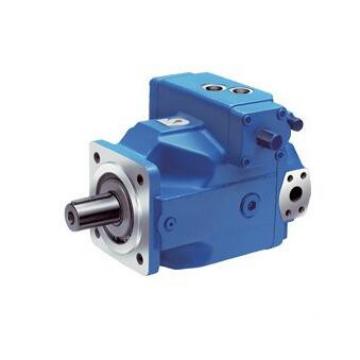 USA VICKERS Pump PVH131R13AF30B252000002001AB010A
USA VICKERS Pump PVH131R13AF30B252000002001AB010A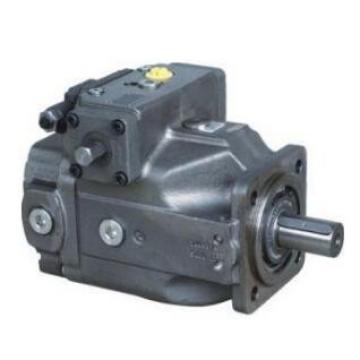 Parker Piston Pump 400481002108 PV140R1K1B4NWLZ+PGP517A0
Parker Piston Pump 400481002108 PV140R1K1B4NWLZ+PGP517A0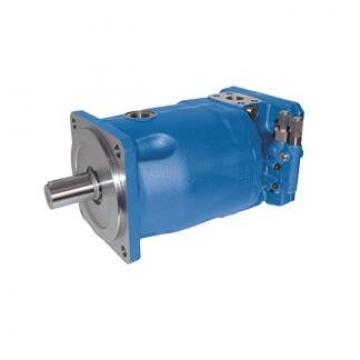 Parker Piston Pump 400481003286 PV180R1K1A4NYCD+PGP511A0
Parker Piston Pump 400481003286 PV180R1K1A4NYCD+PGP511A0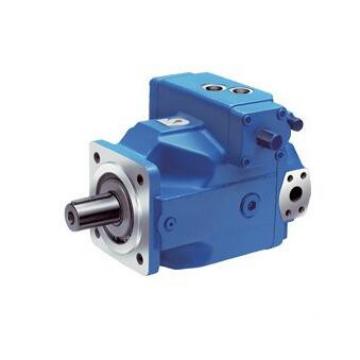 USA VICKERS Pump PVH057R02AA10B25200000100100010A
USA VICKERS Pump PVH057R02AA10B25200000100100010A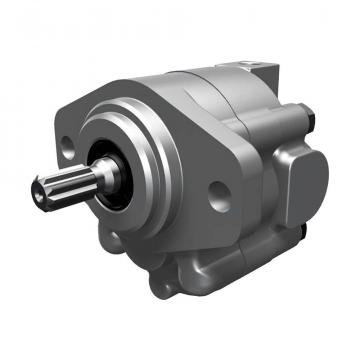 Parker Piston Pump 400481004166 PV270R9K1B4NYLZK0033+PVA
Parker Piston Pump 400481004166 PV270R9K1B4NYLZK0033+PVA